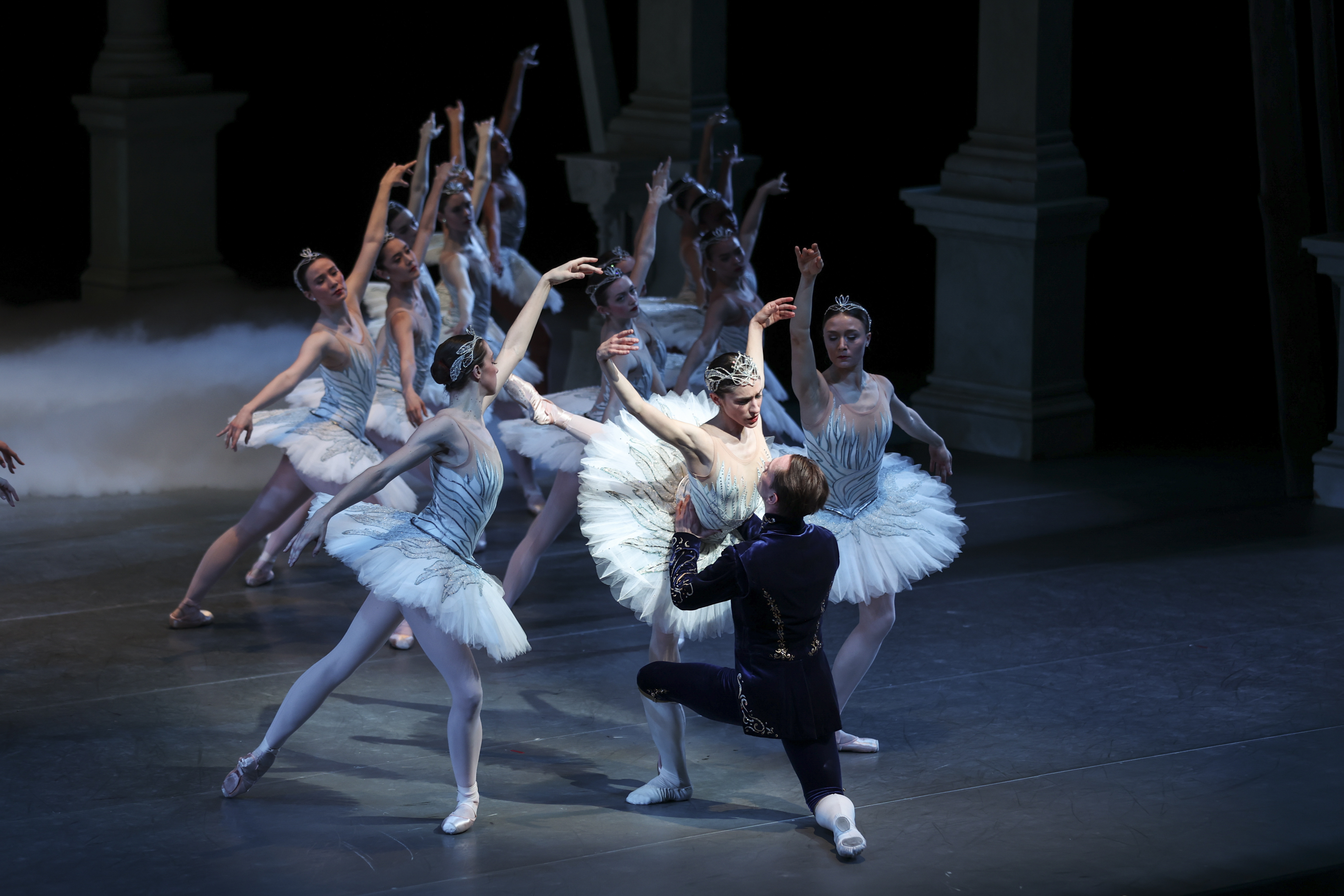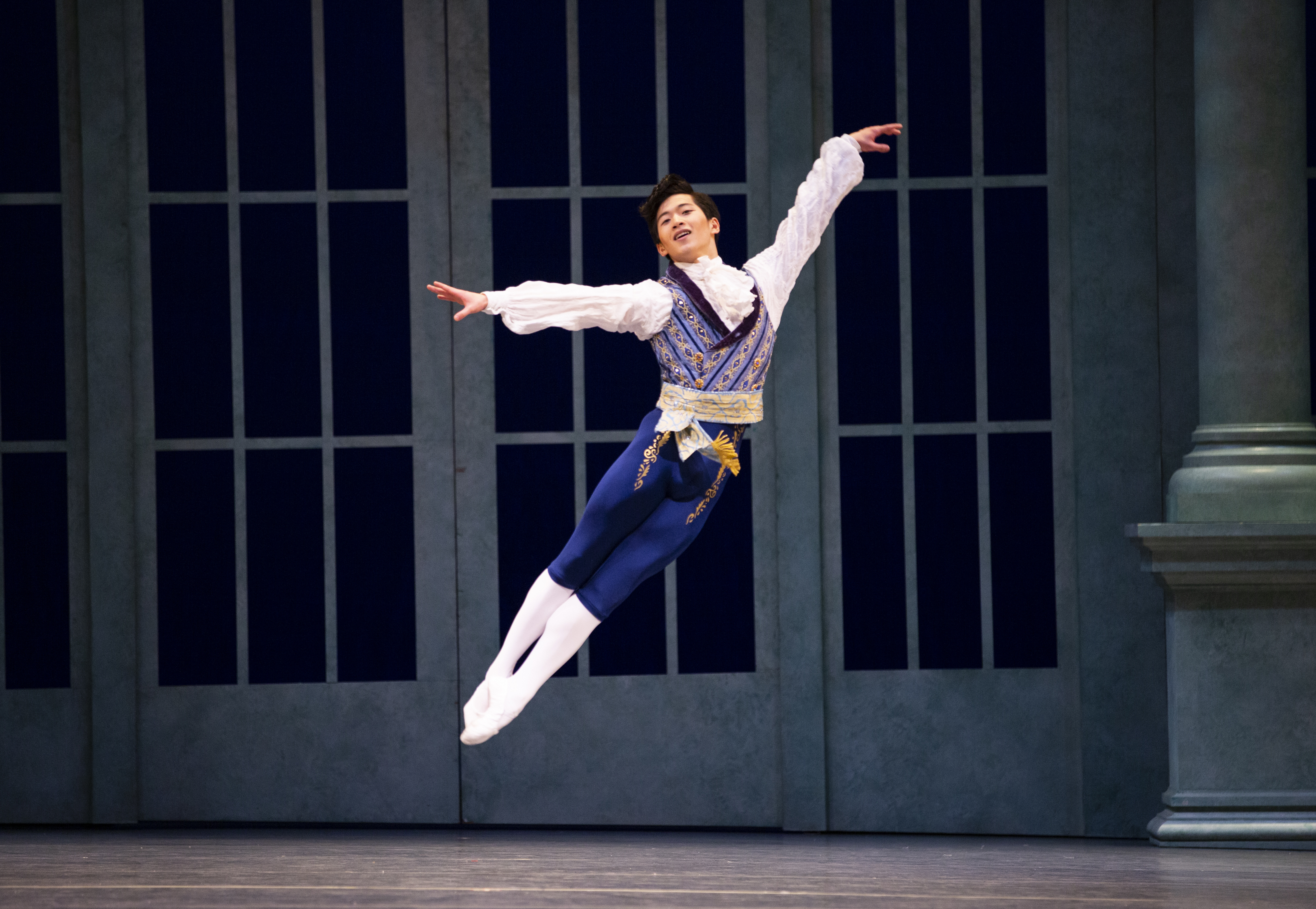What's So Special About Ballet?
Review of Kent Stowell's Swan Lake presented by Pacific Northwest Ballet
Written by Teen Editor Lucia McLaren and edited by TeenTix Mentor Melody Datz Hansen.

Swan Lake is one of the most well-known ballets of all time. It is a classic, somber tale of love between Prince Seigfried and Odette, a young woman who transforms into a swan due to a sorcerer’s curse.
As a student of ballet since fourth grade, I was nervous about reviewing Pacific Northwest Ballet’s presentation of Swan Lake, as it was my first time seeing the piece. Would my level of experience do it justice in a review? Would my lofty expectations of it be fulfilled? Tchaikovsky’s music perpetuates just about every ballet class in America, and I was familiar with the performance’s format, but nonetheless, the nerves were there.
But my worry faded the moment the lights dimmed. The orchestra tuned with practiced efficiency, getting a kind but unusual round of applause from the audience before the curtain rose.
I was immediately enchanted by set designer Ming Cho Lee’s castle-like scene, made immersive by Paul Tazewell’s intricate costumes and grand, regal swells from their talented musicians.

Pacific Northwest Ballet has a reputation for quality production and impressive dancing, and it is easy to understand why. The program specified that their costumes are custom-made—whereas most studios, like my own, have to adjust pre-made costumes to the dancer, which can be difficult. Extra money aside, I was pleasantly unsurprised to see that the technicality of each and every performer was remarkable.
The cast of Swan Lake is almost entirely different for each night it was performed. This review discusses the April 17th matinee performance with principal dancers Leta Biasucci and Kyle Davis performing the roles of Odette/Odile and Prince Seigfried, respectively.
I have always loved strong personalities in ballet. I like the ones you can immediately tell are different; to bend classic technique to a character role shows a step beyond technical ability. Kuu Sakugari as the jester was one of my favorites. His bright costume and bouncing, carnivalesque jumps drew laughter from the audience and onstage royals alike, and his actions when not actively dancing completed the charisma of his character. Biasucci also did a fantastic job at this sort of artistry. Her Odette was gently graceful but nervous, letting herself be coaxed out of hiding by the prince, while her Odile wore a dark and maniacal grin and led the prince wherever she pleased. It was a startling contrast. On top of the incredible endurance of all the dancers throughout the nearly three-hour piece, this made Swan Lake truly captivating.

Shows like Swan Lake are at an intersection between pure dance and theater. They intermix physicality and storytelling, relying on the shape of their bodies and their expressions to make the plot clear to the audience. This balance is difficult to achieve but priceless when properly done.
Ballet has influenced me throughout my life because of two things: its beauty and its ability to make me second-guess myself. I know I am not alone in this, because there are effects shown in the ballet world today—the prevalence of eating disorders, for example, or the way it can lag behind other art forms in diversity. The perfectionism required for such extreme technical achievements sometimes lends itself to toxicity. This harms not only the performers but the audience. The potential of ballet is realized when every child in the theater can dream of playing whoever they want—the regal princess, the brave hunter—without feeling they must sacrifice their identity.
So, did Pacific Northwest Ballet fully embrace diversity and cast aside toxicity? From my outside perspective looking in, I cannot speak to the internal progress of the company, and there will always be more work in pursuit of making ballet equitable. However, I was glad to see both POC dancers and varying body types in roles across the ballet, from the court characters to the ethereal swans. I do believe the ballet world is changing for the better. Some moves are tokenizing, others inadequate, but if there is genuine care and attention given to inclusion, progress will continue. I hope to see Pacific Northwest Ballet continue to commit its commendable resources and skill to this task.
Throughout my life, I have been on stage, in the orchestra, and in the audience. I couldn’t tell you which is best. But as a reviewer, I cannot help but think that a ballet’s ability to engage every audience member is its most important skill. It is performance art. Swan Lake had me on the edge of my seat, but it also had the little girl next to me bouncing with excitement. Kids like her tell you whether a performance is worth its while. Because ballet is more than thirty-two fouette turns—it is a story, onstage and off.
Lead Photo: Pacific Northwest Ballet company dancers in Kent Stowell’s Swan Lake, on stage April 15 – 24, and streaming digitally May 12 – 16, 2022. Photo © Angela Sterling.
This review was written as part of mentorship program where members of the Teen Editorial Staff receive one-on-one mentorship by Press Corps Teaching Artists and professional critics. The Teen Editorial Staff is made up of 6 teens who lead the TeenTix Newsroom and curate the review portion of the TeenTix blog. More information about the Teen Editorial Staff can be found HERE.
The TeenTix Press Corps promotes critical thinking, communication, and information literacy through criticism and journalism practice for teens. For more information about the Press Corps program see HERE.

